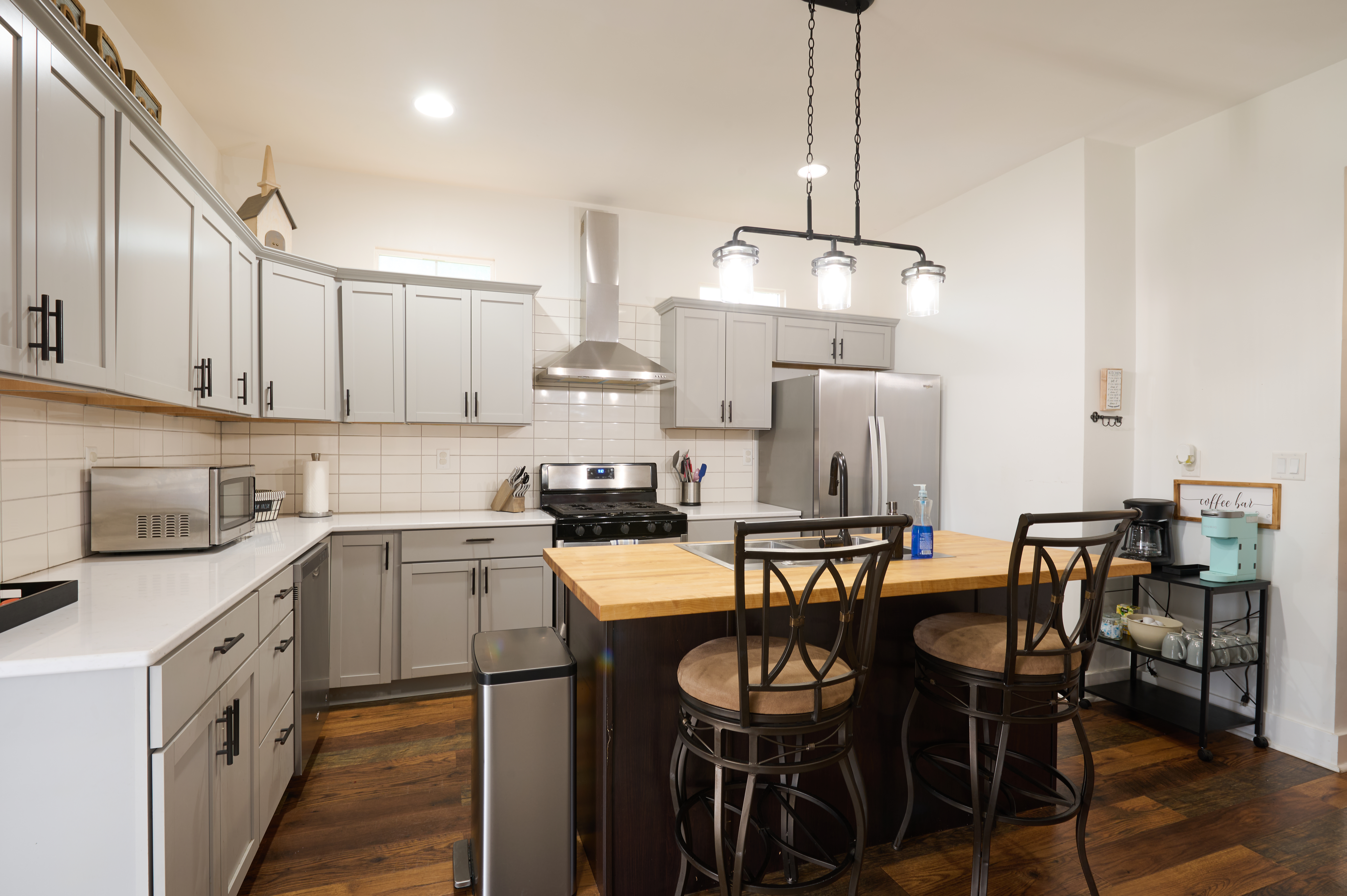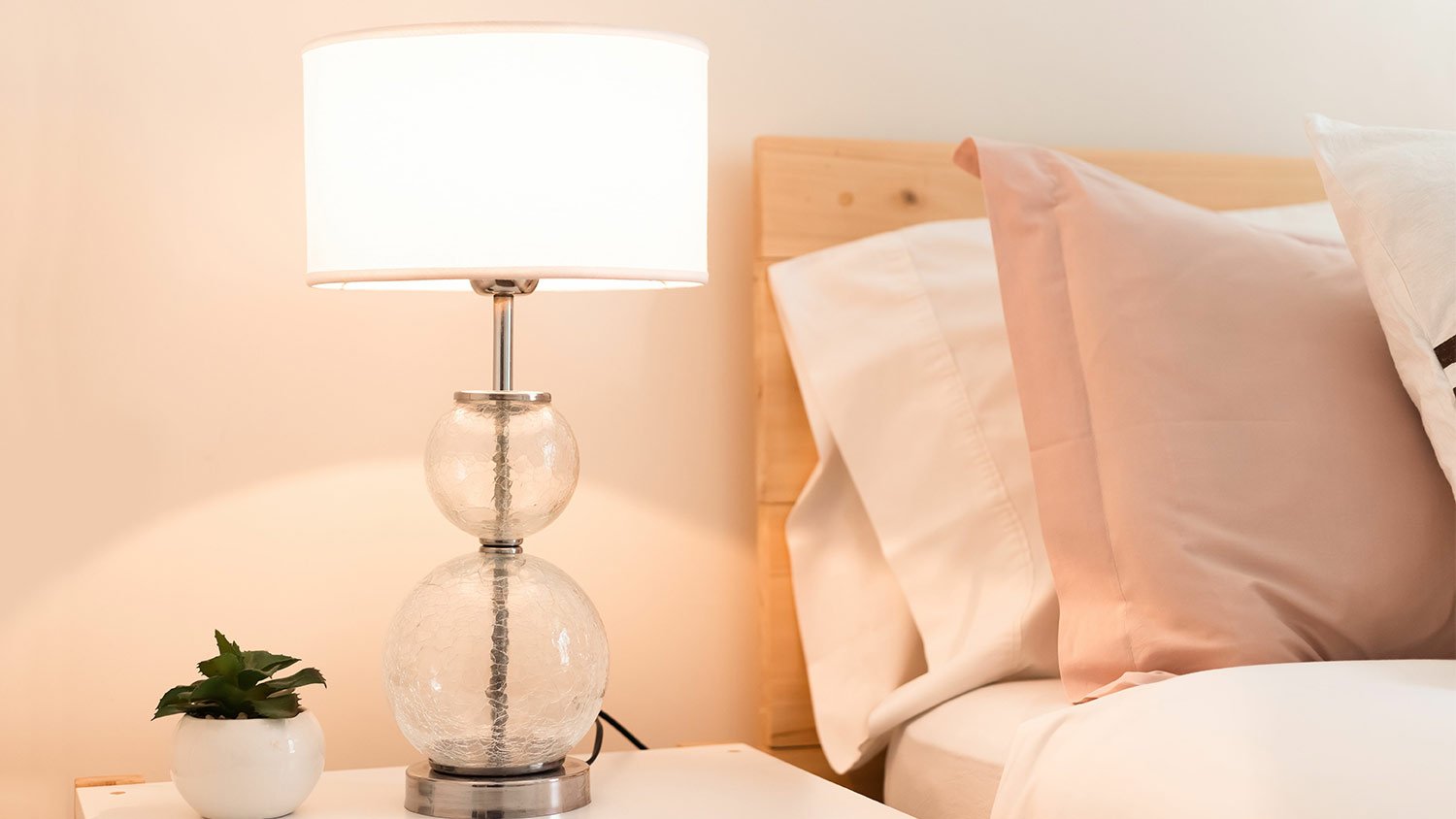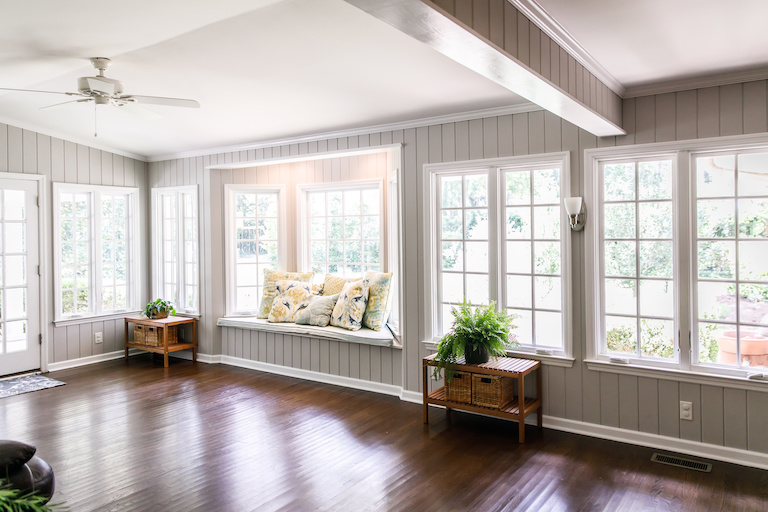
A GFCI outlet can keep your family safe and is relatively inexpensive to install. Learn how much replacing GFCI outlets will cost you, and what factors into those costs.
LEDs light up your life—but for how long?


Actual usage—not time—will determine how long LED lights last.
LED lights last around four to seven years with frequent use.
Excessive heat can shorten the lifespan of LED lights.
You’ve probably heard about the benefits of incandescents vs. LEDs: They burn brighter, save on energy costs, and have an impressive lifespan. But exactly how long do LED lights last, anyway?
The numbers can sound too good to be true—and they are in some cases—but you can factor in a few key details to get a better picture of how they’ll measure up in your household. Let’s take a realistic look at LED lifespans and how to get the most from your bulbs.
Lofty manufacturer promises can leave you blinded by the light—so, how long do LED lights last? Whether you’re installing LED strip lights in the kitchen or a new fixture in the bathroom, lifespan matters.
While some manufacturers include a time estimate on their packaging, which is often listed as anywhere from 10 to 15 years, this can somewhat bend the truth.
In reality, it’s impossible to gauge an LED light bulb’s life expectancy by the passage of time alone; actual usage is what really matters. After all, the light bulb in a forgotten spare room will last far longer than a mudroom light that no one can ever remember to shut off.
Accounting for the usage of the average bustling household, a more realistic figure on how long LED lights last is anywhere from four to seven years.
Of course, it’s certainly possible for your bulb to last 10 years, or even the maximum amount of time touted on the packaging, but this typically factors in less-frequent usage and diligent remembrance to shut it off.
If you can’t strictly go off the lifespan on the packaging, how long do LED lights last based on usage? Along with the estimated years the bulbs will last, most manufacturers include average total hours; this is where you can plug your numbers and find out how they’ll truly last in your household.
Let’s say your manufacturer has estimated a lifespan of 15,000 hours on your light bulb. If the bulb stays on for six hours a day, that’s 2,190 hours a year. Divide the total of 15,000 hours by 2,190 and you get a total lifespan of just under seven years.
More examples based on usage are below:
| Expected Lifespan | Average Daily Bulb Usage | Number of Years |
|---|---|---|
| 1,000 hours | 1 hour | 3 years |
| 15,000 hours | 6 hours | 7 years |
| 100,000 hours | 12 hours | 2 years |
It’s not an exact science, but it will certainly help you determine your actual cost savings when investing in LED bulbs.

Manufacturers typically print estimated lifespans based on average ambient room temperature, daily usage, and current level. Deviating from the norm will impact how long the LED actually lasts.
Whether you’re installing garage lighting or replacing your bedside lamp bulb, here are the main factors that play into an LED’s lifespan.
The number of hours an LED stays on will determine how long it lasts before needing replacement. However, unlike incandescent bulbs, the number of times you turn an LED bulb on and off will not impact its lifespan.
On top of average usage, the heat conditions surrounding your LED light bulb will also play a role in its lifespan. Think of your LED bulbs as any other electronic device.
When exposed to heat, the inner parts—mainly the heat semiconducting element—will also heat up. This can accelerate the degradation rate of the light-emitting diodes, which shortens the lifespan of the LED bulb.
Similarly to heat exposure in its outside environment, higher currents will increase the temperature of an LED’s heat semiconducting element and shorten its lifespan. Sudden voltage surges of more than 10% will likely damage the electronic parts inside the LED, reducing how long it lasts.
Like any halogen light source, LED bulbs will gradually grow dimmer with prolonged use. However, there’s a big difference between incandescent versus LED lights: They don’t immediately burn out once they’ve passed their prime.
LEDs are designed with a high output decay point—in other words, once they pass their lifespan, they’ll dim slowly instead of abruptly burning out.
Your halogen closet light might burn out in an instant as you’re selecting a sweater, whereas its LED counterpart won’t leave you in abrupt darkness. This is especially handy for those of us who have trouble remembering to purchase new bulbs before the existing ones go out.

It’s clear that LEDs last longer than incandescents, but their price tag is also higher. Is it really as good of a deal as the marketing claims?
The simple answer is yes. According to the U.S. Department of Energy, the average household saves $225 per year on energy costs by switching to LED light bulbs. Plus, incandescent bulbs have an average lifespan of about 1,000 hours, while LEDs can last anywhere from 15,000 to 100,000 hours.
With all that in mind, that extra initial investment will bring you years of additional use, as well as additional energy savings on top of it.
Contact a local interior lighting designer to help you plan the perfect lighting setup for your home.
It sounds simple, but many of us forget about turning off the lights when they’re not in use, and those hours of unnecessary lighting can add up. For example, one forgotten bulb overnight gets around eight hours of use; three nights will equal an entire day, and so on.
This is not to say that it’s easy to remember to shut the lights off—life happens, and these small tasks are often among the last things you think about. Luckily, if you’re trying to be better about it, you can simply add a timer or better yet, invest in a smart home system that does the work for you.
These systems let you set everything ahead of time—including lights, thermostat, locks, and more—so you’re free to forget about them after you turn in for the evening. Get in touch with a local smart home automation specialist to learn more about what these systems can do for your home.
From average costs to expert advice, get all the answers you need to get your job done.

A GFCI outlet can keep your family safe and is relatively inexpensive to install. Learn how much replacing GFCI outlets will cost you, and what factors into those costs.

Keep pool-side dreams from getting short-circuited by being aware of pool electrical installation costs and how they can affect your overall budget.

If your outside electrical meter box has sustained wear and tear, it might be time for a replacement. How much it costs to replace an electrical meter box depends on labor, model, and box type.

Is your home costing you more money than it should be? You can take steps to save money throughout your home to keep it where it should be—your wallet.

Planning out a 50-amp circuit? Selecting the right wire size is crucial. Find out how to determine the right 50-amp wire size.

Wondering who to hire for electrical work on home additions? Compare electricians and electrical contractors to see how pros get the job done.